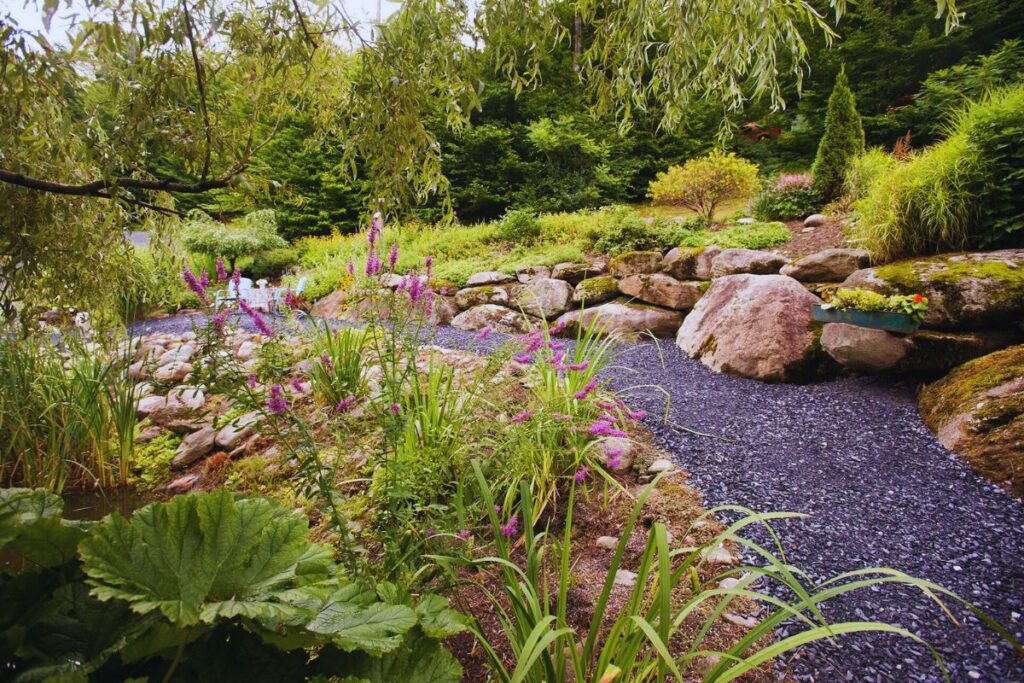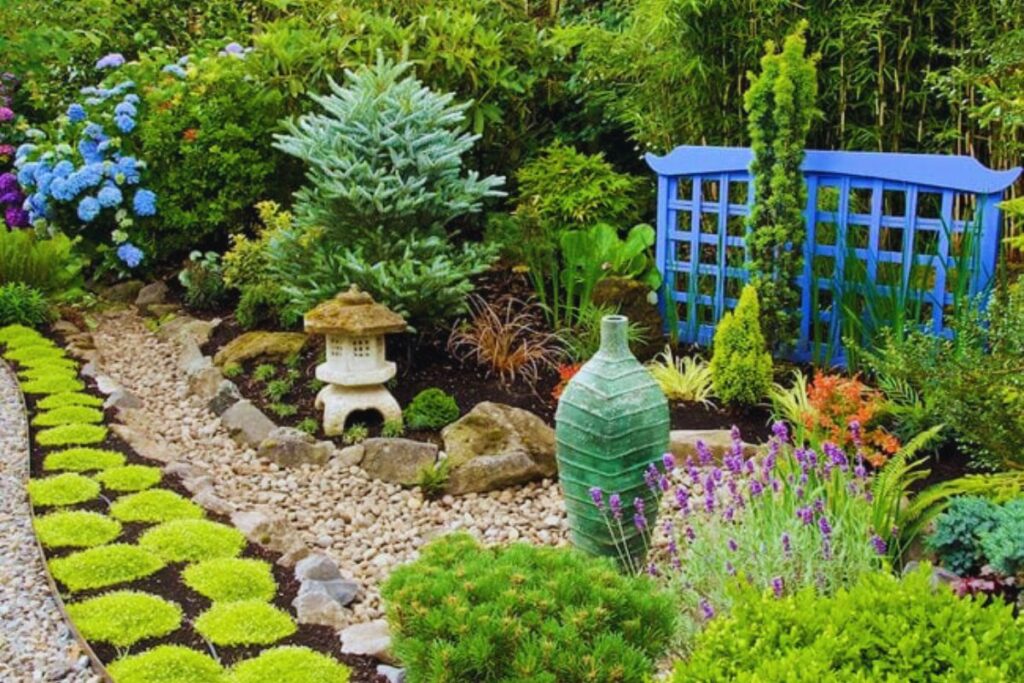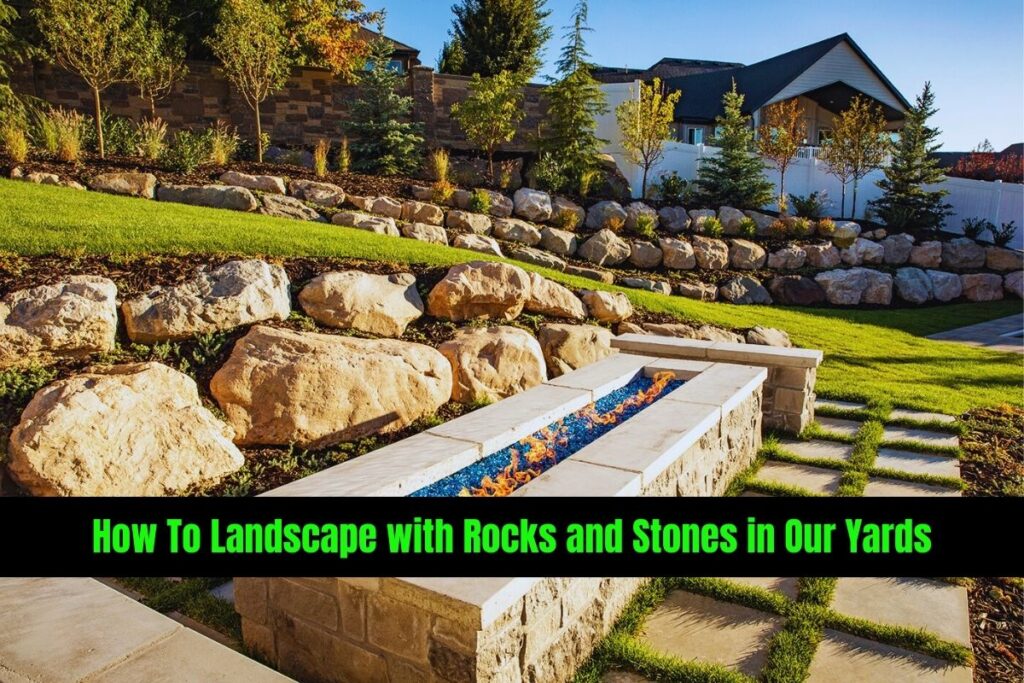If you want to landscape with rocks and stones, it’s important to introduce attractive elements and some beautiful stones to your yard.
When we are thinking of a kickup landscape, the first thing that strikes our mind is plants, but apart from plants, adding rocks and stones to the yard adds a stunning touch to your place.
These tips help you upgrade your garden with rocks and stones.
What is the difference between landscaping rock and stone?
While understanding and thinking of these two words, only similarity can be observed, but in reality, both are different from each other. Let’s understand both of these terms. Stones are hardly breakable when they come into contact with water or moisture; they have a strong force of molecules or atoms, whereas vice versa with rocks. i.e., when the rocks come into contact with water, they easily break in a short period of time. Stones have a frictional surface or are brittle, whereas rocks are smooth in texture.
Before starting this project, the first thing is to understand the things. For your understanding, read out these tips and implement them in your yard.
Here are seven tips you can follow.
- Understanding of Rock and Stone using
- Concern about seasons
- Kick up small
- Limited to single kind of stone or rock
- Select best type of stone
- Remember Maintenance
- Extra stones in backup
So let’s have a journey!!

Understanding rock and stone using
There are numerous possibilities for incorporating rocks and stones into your yard. People like to use it in two ways: as an accent in the garden and in any container. By using a water deco system, you can use rocks and pebbles in more beautiful ways. The combination of rocks and stones in the in the garden with alpine trees adds the cherry on top, which actually looks beautiful and mesmerizing.
Concern about seasons
Rocks and stones are seen as practical and dominating elements in the yard. They have the capability to strongly influence anybody or a viewer. It’s important to understand that in winter, stones turn into dominant elements. Seasons play an important role. As told earlier, rocks with moisture can break over a short period of time so it’s important to wisely select the rocks.
Kick up Small
It’s not necessary to always go for the big stones or rocks. Sometimes small packages result in big bursts. Small stones also complement each other beautifully. It is observed that planters with bigger and wider containers together give your space an adorable look to your space.If you want to extract the light from the sun in your garden, then you can use specimen stones. And the look of your yard largely depends on the arrangement of stones and rocks.
Limited to single kind of stone or rock
When we are doing home landscaping, it’s better to select a single type of stone rather than opting for a color mixture and variety. Several additional stones look so clumsy, while one kind of stone gives off a professional look and pretends to be natural with its texture. It is very important to stick to terms that are easily accessible, adaptable, acceptable, and match the other stones and elements that already exist in your place.
Select the best type of stone.
If you want to establish a moisture-free stack wall, you need some different materials that are also used for retaining walls. When establishing a stack wall, prefer two edge stones that are flat. Prefer sedimentary kinds of rocks like sandstone or limestone that originate from the beneath of lakes and seas; their special feature is to break automatically and create a fun-pleasing scenario, which creates a list in your project.
Remember Maintenance
For many instances, the rock and stone implementation doesn’t require much care, but sometimes it does. Under certain conditions, it’s become mandatory to see things once in a while so that the project works according to plan. For example, in winter or snowy areas, rocks get displaced and shift to another place, so support is required at that time. Rock gardens require less weeding as compared to garden beds. But maintenance should also be there to take care of climatic shocks.
Extra stones in backup
Stones in stock give you the benefit of being easily accessible because, when there is a need for refilling, you can easily fill them from your stock without any hassle. Gardens are decorated to attract butterflies and insects, and rocks and pebbles complement this project, which serves as the best option for early mornings to add freshness.

Frequently Asked Questions
What are the key differences between landscaping rock and stone?
Rocks are more prone to breakage when exposed to water, while stones are harder and more resistant. Stones typically have a frictional surface, while rocks are smoother in texture.
How can I incorporate rocks and stones into my yard?
Rocks and stones can be used as accents in the garden, in containers, or in water features. They can also be combined with alpine trees for a beautiful effect.
What should I consider regarding seasons when using rocks and stones in landscaping?
In colder seasons, rocks become more dominant in the landscape. It’s essential to choose rocks that can withstand moisture to prevent breakage.
Do I need to use large rocks, or can smaller ones be effective?
Small rocks can be just as effective and can complement larger ones. They’re particularly useful in planters and wider containers.
Should I stick to using a single kind of stone or rock in my landscaping project?
It’s generally recommended to use a single type of stone for a more professional and cohesive look. This ensures consistency and blends well with existing elements.
What type of stones are best suited for specific landscaping projects?
Sedimentary rocks like sandstone or limestone are ideal for moisture-free stack walls or retaining walls. These rocks have flat edges and natural textures, enhancing the overall aesthetic.
How much maintenance do rocks and stones require in landscaping?
While they generally require minimal care, occasional maintenance may be needed, especially in snowy areas where rocks can shift. Rock gardens typically require less weeding compared to traditional garden beds.
Why should I keep extra stones in backup?
Having extra stones readily available allows for easy refilling and maintenance as needed. Additionally, rocks and pebbles can attract butterflies and insects, adding to the beauty of the garden.
The Conclusion
In conclusion, it’s important to understand the difference between rocks and stones. Also know the factors like weather conditions and maintenance techniques; you can create a mesmerizing yard spot by incorporating these. Go for a single type of stone to give it a professional look rather than a clumsy one. Always keep a stock of stones in backup for easy refilling when it’s required. These kinds of elements enhance the beauty of your landscape. Adding stones and rocks to your yard gives a rocking look to your garden.
Read More:
How Do I Select The Shape of The Lawn?
10 Ideas To Infuse Simple Beauty Into Your Outdoor Space

